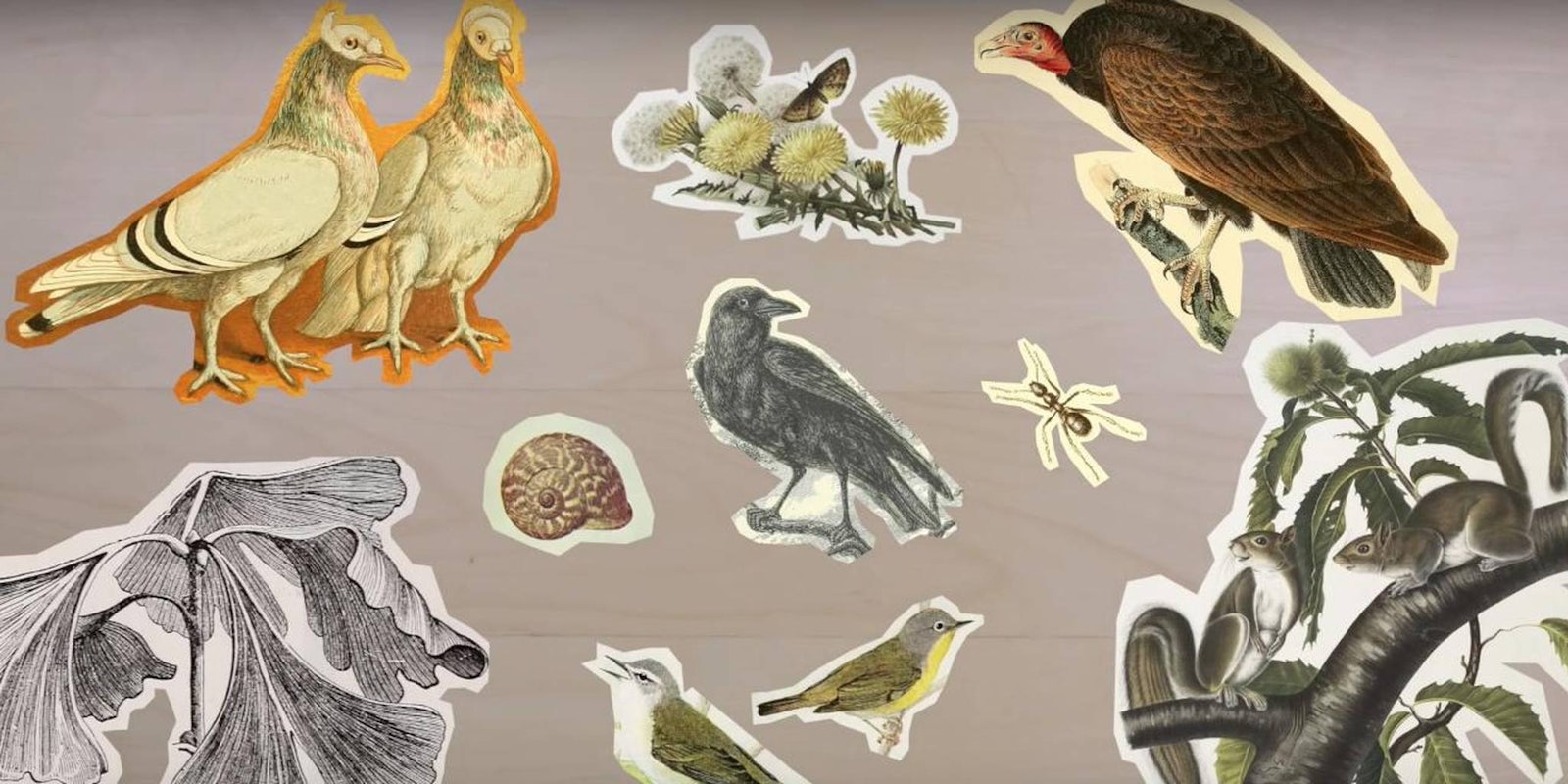We’re usually only aware of the critters and plants with which we share our cities when they get in our way.
If a rat wanders into your home, a raccoon gets into the trash on your street, or a tree falls on the power line to your building, it suddenly reminds you that there’s more than than just humans, concrete, and steel in your neighborhood.
But while you’re going about your morning commute, you may miss the snail on the leaf of the plant outside the coffee shop, or the fact that the pigeons scattering as you approach the shop are actually missing bits of their feet. A new book, Unseen City, aims to open people’s eyes to the fascinating world of their nonhuman neighbors.
Author Nate Johnson, who also writes for the environmentalist news outlet Grist, told the Daily Dot that he was inspired to write the book when his daughter started to ask about the world around her.
“Walking with my daughter every day taking her to daycare,” Johnson told the Daily Dot in an interview, “she was really interested in all of the living things that we were passing. She’d be pointing at the trees mostly and saying, ‘What’s that?’”
He realized that he didn’t have much more of an answer for her than “tree,” so he challenged himself to learn about all the things his daughter was pointing out to him—not just the tree, but what kind of tree it was, and what stage of its life it was in at the moment.
“It was kind of magical,” Johnson said, “this experience of having these cool things pop out at me that had been right there in front of my face and notice and pay attention every day as I was walking past.”
It didn’t take long for Johnson to realize that his experience would make a cool book.
Unseen City is devoted to the most mundane animals and plants. Rather than focus on the animals we tend to get excited about—coyotes, deer, birds of prey—Johnson focused on pigeons, squirrels, gingko, and other flora and fauna we take for granted.
The book is also more than just a guide. Johnson spoke with scientists who devote their lives to studying these critters.
He spent one day with a researcher watching squirrels bury nuts on the campus of the University of California, Berkeley. They watched one squirrel bury a nut about 10 feet away, and the researcher suggested that they try to go dig it up. Johnson agreed, thinking it would be an easy task. After all, he had just watched the squirrel bury it moments earlier.
“But this strange thing happened to me,” Johnson said. “You [get closer] and you’re like, wait, that exact spot? Or two inches to the side? Or five inches higher? And all of the sudden it’s completely gone.”
“[Squirrels are] amazing at hiding their nuts; there was no sign of it. But then they’re able to remember where they buried it, the exact square inch, and they’re able to remember literally thousands of these spots.”
Have you ever noticed that pigeons are often missing toes?
In an episode of the podcast 99 Percent Invisible recorded in front of a live audience at the California Academy of Sciences in San Francisco, Johnson told host Roman Mars about how, once he started to see pigeons, he began noticing that several of them were missing toes or even whole feet.
In his research, Johnson said, he discovered that hairs and threads get tangled around the pigeons’ toes, eventually cutting off the circulation and causing them to fall off. The pigeons simply cannot untangle themselves.
It’s an example of how an animal that is otherwise very well adapted to live alongside humans is at a disadvantage in its environment.
Johnson told the Daily Dot that he hopes Unseen City will help people lift the veil they often carry around and see the world the way his daughter does.
“It is really magical and rewarding to see like a two year old every once in awhile,” Johnson said. “That experience of looking at something and being like, ‘There’s nothing here,’ and then learning how to see, paying attention long enough that your eyes burn through the screen of your expectations and suddenly it’s crawling with all this life.”
To that end, Johnson hopes that, when people have this experience, they’ll take a moment to snap a photo and share it on social media with the hashtag #unseencity. The hashtag, to him, is less about marketing his book and more about trying to engage people to take a closer look at their surroundings and see something that they previously missed.
#unseencity pic.twitter.com/HvHpWw1GJK
— Emily Firman (@emilyinwa) April 7, 2016
I love catching a glimpse of the bats just after sunset. It’s like being a part of a city secret. #unseencity
— Dylan (@janfitc) April 7, 2016
Crows mobbing a hawk #UnseenCity pic.twitter.com/a4UjS5dYgL
— Nathanael Johnson (@SavorTooth) April 7, 2016
Johnson also believes that recognizing that nature is dynamic—that it grows and evolves around us, as well as because of us—will inspire us to protect it in a way that zoos and nature preserves can’t accomplish.
“The thing that has consistently kneecapped environmentalism is this sense that nature is static, and that we need to save it from other bad cartoonishly evil people,” Johnson said. “If we want to preserve certain parts of systems that we value, it’s not about preserving it from ourselves, but learning how to use it and live with it.”


